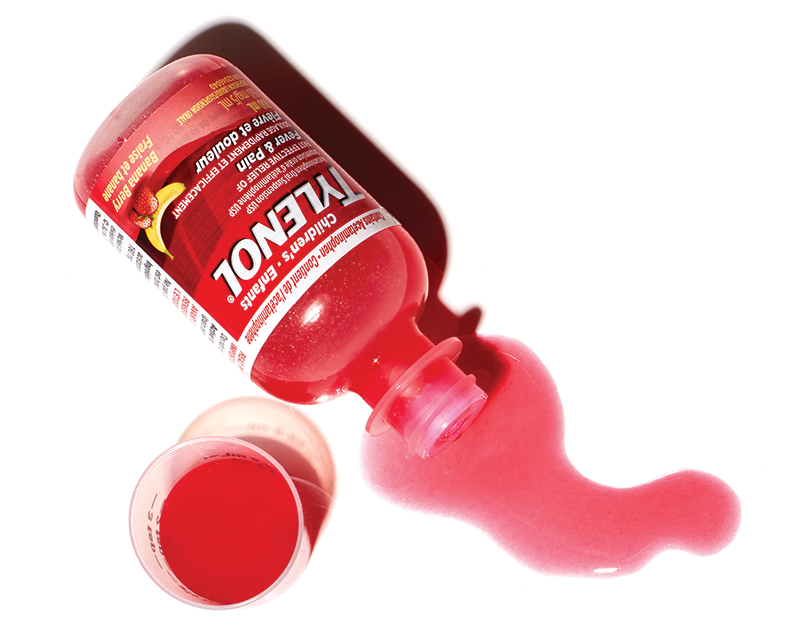Crack open the average medicine cabinet in Canada and chances are you’ll find a similar cast of characters. Tylenol. Check. Benadryl. Yep. Antibiotic ointments. Probably. Despite their different uses, these standard drugs have one thing in common: they belong to a class called small molecule drugs.
Few people know it, but small molecule drugs comprise up to 90 per cent of the medicines we use on a daily basis in homes or hospitals. In addition to the staples of the medicine cabinet, these drugs include propofol for anesthesia, lorazepam to stop seizures and the steroid dexamethasone. Not to mention Paxlovid — made up of two small molecule drugs — and remdesivir, which are among the few approved treatments to curb early-stage COVID-19 infections before they become severe.
Though small in size, these drugs have enormous potential. That’s why U of A research scientists are developing a wide range of homegrown versions to take on everything from cancers to future pandemics.
Unsung Heroes of Health Care
Small molecule drugs are tiny organic compounds that can be absorbed readily and enter cells easily to carry out their intended therapeutic effects. Some, like the family of commonly used antidepressants known as selective serotonin reuptake inhibitors, or SSRIs, attach to the surface of cells to do their work. Other small molecule drugs get into cells by active or passive diffusion or are carried by one of the human body’s hundreds of transporters — proteins that move peptides, lipids and other molecules across a biological membrane. The benefit of small molecule drugs is that they’re relatively easy to administer, often by mouth or intravenously, and relatively stable.
Some of these drugs are designed by chemists. Some already exist naturally or as previously developed compounds but their full effects aren’t yet known. Even the ancient Egyptians had an inkling of the antibacterial qualities of fungi when they applied a poultice of mouldy bread to a wound, for example, yet it wasn’t until 1928 that penicillin was discovered. It is still perhaps one of the best-known and most revolutionary small molecule drugs around.
Researchers at the Ready
Biochemist Joanne Lemieux is part of a network of scientists at the U of A researching small molecule drugs — in her case, antivirals to fight the COVID-19 pandemic as well as future threats.
“It’s an exciting time for antiviral drug development,” says Lemieux, who was recently appointed executive scientific director for the Prairie Hub — a new federal research centre devoted to pandemic preparedness.
She’s working with chemists and virologists to design drugs that inhibit a crucial enzyme of SARS-CoV-2, the virus that causes COVID-19. So far, they’ve synthesized more than 75 promising candidates. They are now selecting the best and honing them for testing, first in animal models and ultimately in humans.
At other U of A labs, microbiologist David Marchant and his team are developing a nasal spray that could be used to fight respiratory syncytial virus (RSV) which, along with COVID-19 and the flu, rounded out what some called Canada’s 2022 “tripledemic.” Meanwhile, neurologist Jack Jhamandas, ’74 BSc(Hons) ’76 MSc, working with the Li Ka Shing Applied Virology Institute, has identified a small molecule drug that shows promise in the treatment and prevention of Alzheimer’s disease.
A History of Success
U of A researchers have a solid track record of developing small molecule drugs that are saving the lives of people affected by viral diseases.
Lamivudine was first synthesized by a McGill University scientist in the 1980s to treat HIV/AIDS, but it was D. Lorne Tyrrell, ’64 BSc, ’68 MD, founding director of the Li Ka Shing Institute of Virology and GSK Chair in Virology, who demonstrated that it is also effective against viral hepatitis B.
Voclosporin is based on a drug molecule discovered and developed by Robert Foster, ’79 BSc, ’82 BSc(Pharm), ’85 PharmD, ’88 PhD, a 2022 U of A Distinguished Alumni Award recipient, and his team. The drug received FDA approval in 2021 as the first oral treatment for lupus nephritis, an autoimmune condition.
And it was the U of A virology lab of Matthias Götte that first demonstrated the ability of remdesivir — a drug originally developed against Ebola — to target the SARS-CoV-2 replication machinery.
Laying the Foundation for a Homegrown Industry
The Li Ka Shing Applied Virology Institute was established in 2013 with a view to ensuring more of these homegrown discoveries could be tested and commercialized within Canada. Under the direction of Michael Houghton, co-winner of the 2020 Nobel Prize in Physiology or Medicine, the institute is building partnerships with businesses, governments and other research institutions to carry vaccine and drug development through testing, manufacturing and distribution to patients — literally from lab bench to bedside, here in Alberta.
The goal is to bring the numerous research projects underway to pharmacy shelves — providing new vaccines for hepatitis C and group A streptococcus and medicines for COVID-19, herpes viruses, cancer, Alzheimer’s disease and others.
Houghton notes: “It will help Canada be better prepared for future and current pandemics, as well as help to develop drugs and vaccines against common major diseases for which we have no preventatives or treatments currently available.”
We at New Trail welcome your comments. Robust debate and criticism are encouraged, provided it is respectful. We reserve the right to reject comments, images or links that attack ethnicity, nationality, religion, gender or sexual orientation; that include offensive language, threats, spam; are fraudulent or defamatory; infringe on copyright or trademarks; and that just generally aren’t very nice. Discussion is monitored and violation of these guidelines will result in comments being disabled.